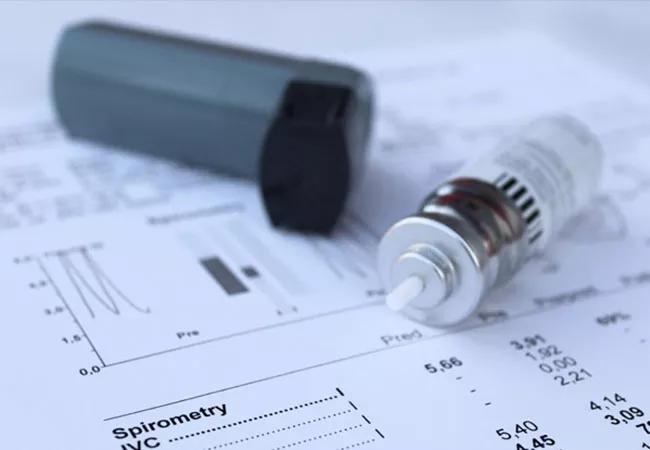A new framework for a successful step-down

Guidelines for asthma management call for the adjustment of asthma controller therapy upward or downward in response to level of asthma control over time.
Advertisement
Cleveland Clinic is a non-profit academic medical center. Advertising on our site helps support our mission. We do not endorse non-Cleveland Clinic products or services. Policy
Traditionally, most clinicians have focused on stepping up controller therapy in patients whose asthma is inadequately controlled. Once asthma is brought under control, the level of controller therapy is generally maintained.
But that focus has now shifted to reducing the amount of medication used by low-risk, well-functioning patients whose asthma has been well-controlled for an adequate period of time.
“Stepping down controller therapy serves to identify the minimum effective treatment that will maintain well-controlled asthma based on both impairment and risk domains, while minimizing the risk of adverse effects from higher doses of medication than may be needed to maintain control,” says David Lang, MD, Chairman of Allergy and Clinical Immunology at Cleveland Clinic and President of the American Academy of Allergy, Asthma and Immunology (AAAAI).
The recently published Asthma Controller Step-Down Yardstick provides comprehensive recommendations for tapering the medications used in each level of asthma severity.
“Our objective was to provide clinicians who treat patients with asthma with a practical and clinically relevant framework for implementing a step-down in controller therapy,” he says. “It’s a consensus document based on best evidence, assessment of the potential for benefit or harm associated with stepping down therapy and our clinical experience.”
The primary reason to step down therapy is to minimize the risk of adverse effects from taking more medication than required. Stepping down therapy can also simplify the treatment regimen, may enhance adherence and has the potential to reduce treatment costs.
Advertisement
“Tapering treatment also may be used to reassess the diagnosis of asthma,” Dr. Lang adds.
Patients who have achieved adequate asthma control for three to six months, depending on the initial severity of their disease, may be considered. Patients who have experienced a recent serious flare are not suitable candidates. Yet these guidelines may not apply to every patient.
The timing and process may vary between patients. “Factors to consider before attempting to step down controller therapy include the patient’s current and previous levels of asthma control, especially the frequency and severity of previous exacerbations; their current and previous patterns of asthma control; the time since their last exacerbation; factors contributing to symptom instability; and potential barriers to success,” says Dr. Lang.
Dr. Lang emphasizes his belief that a discussion on stepping down asthma controller therapy is an opportunity for shared decision-making.
“I invite patients to participate in the process in order to determine what they prioritize. Some prefer maintaining asthma control and are less inclined to proceed with a step-down in therapy. Others prefer taking less medication, with the understanding their asthma may flare. There is no right or wrong answer: It depends on their values and preferences,” he says.
“You have to have guardrails. If at any point the patient begins using a rescue inhaler more frequently, or exhibits other signs that their asthma control is lapsing, they will resume their previous medical regimen,” he says.
Advertisement
“The likelihood of a successful step-down increases as the period of stability lengthens and the patient understands and agrees to the step-down process. Careful monitoring and use of an action plan once step-down has been initiated are also critical to success,” he says.
Advertisement
Advertisement

A detailed clinical history should be obtained directly from patients to determine their risk of penicillin

Cleveland Clinic allergist and immunologist weighs in on its benefits and limitations

19 in 20 will not have an allergic reaction

Mechanism likely related to reduced capacity for release of leukotrienes

Advanced COPD care benefits from diverse medical expertise and perspectives

Pediatricians and adolescent medicine specialists must play a role in curbing teen ENDS usage

Cleveland Clinic research emphasizes taking a holistic and individualized approach to care of septic shock

Pearls to reduce the strain of RSV, COVID-19 and influenza infections